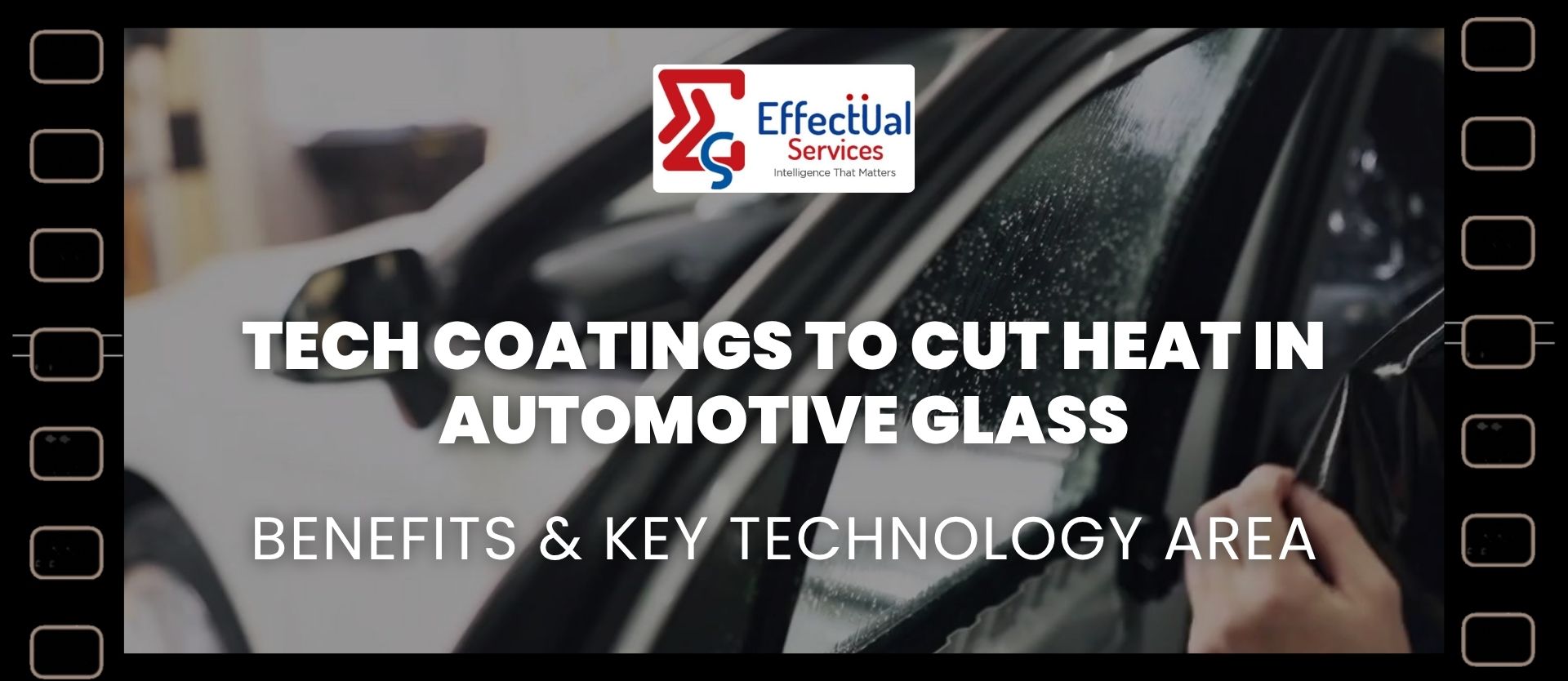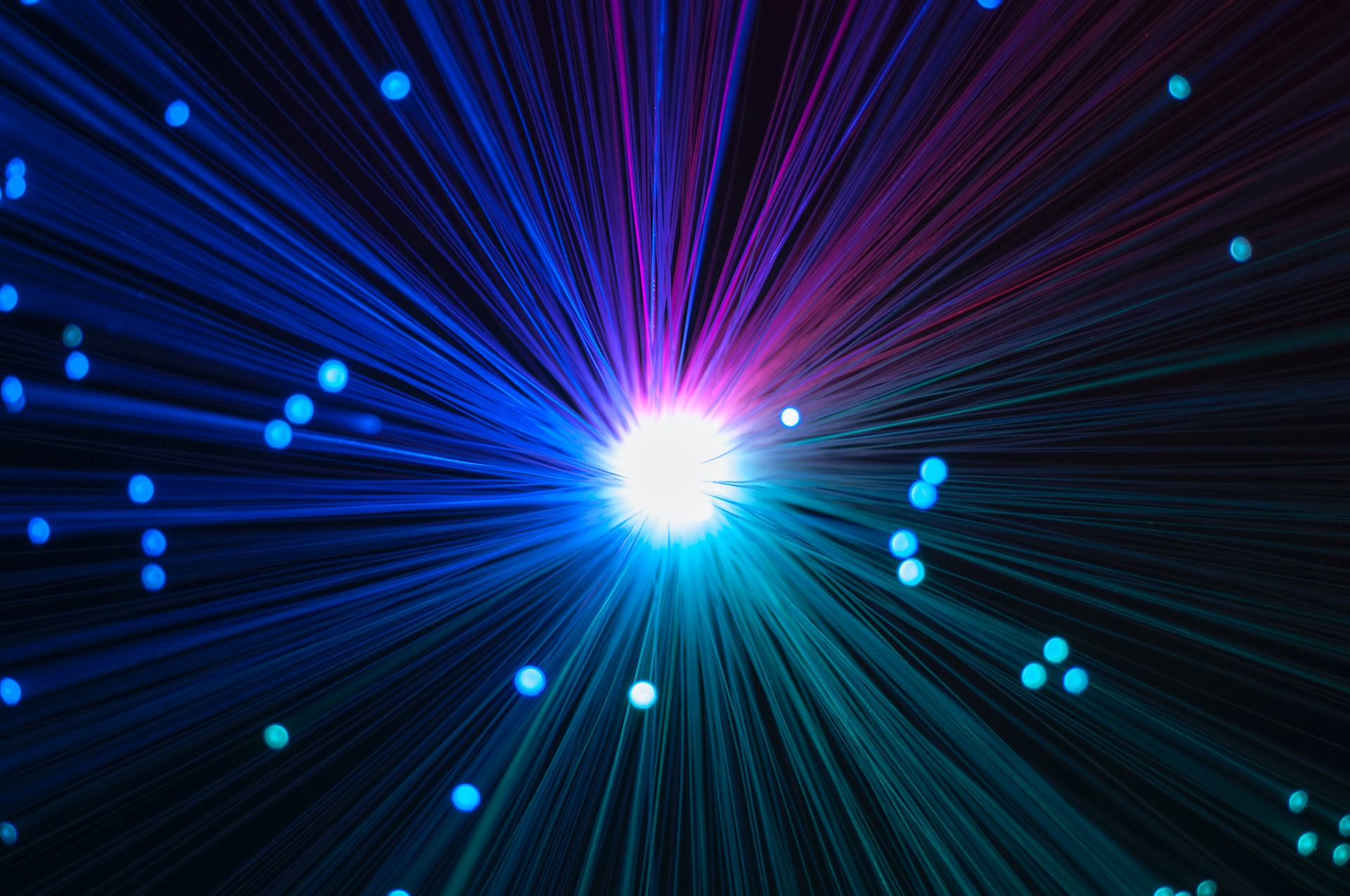Tech Coating to Cut Heat in Automotive Glass (Benefits & Key Technology Area)

Benefits of Coating Technology
- Heat Rejection: Reflective coatings effectively reduce heat transmission through automotive glass, improving passenger comfort by minimizing heat buildup inside the vehicle.
- Energy Efficiency: By lowering the need for air conditioning, these coatings contribute to reduced energy consumption, making the vehicle more environmentally friendly and economical to operate.
- UV Protection: Many coatings block harmful ultraviolet (UV) radiation, preventing skin damage and protecting the interior of the vehicle from fading and wear.
- Aesthetic Appeal: Reflective coatings can enhance the appearance of automotive glass, providing a sleek, modern look while maintaining clarity for drivers and passengers.
- Privacy: Certain reflective coatings can reduce visibility from the outside without affecting the view from inside the vehicle, enhancing privacy for passengers.
- Durability: High-quality coatings are resistant to scratches and environmental wear, ensuring long-lasting performance under various conditions.
- Versatility: These coatings can be applied to different substrates, including glass, metal, and plastics, making them adaptable for various applications beyond automotive, such as in aerospace and architecture.
Factors Influencing Reflectivity of Coatings
- Material Composition: Metals such as silver and aluminum are commonly used for their excellent reflectivity, while dielectric materials like TiO2 offer high reflectance when structured in thin, multilayered configurations.
- Coating Thickness: Thicker coatings typically result in better reflectivity, but there is an optimal thickness for each material, beyond which additional thickness may not significantly improve performance.
- Surface Smoothness: Smoother surfaces lead to higher reflectivity as they reduce light scattering. Ensuring a smooth substrate before applying the coating is crucial for optimal performance.
- Angle of Incidence: Reflectivity tends to be highest when light strikes the coated surface perpendicularly. Coatings are typically optimized for a range of angles that vehicles encounter during daily use.
- Wavelength of Light: Some coatings are designed to reflect specific wavelengths, such as infrared radiation, to prevent heat buildup while allowing visible light to pass through for better visibility.
- Environmental Factors: Humidity, temperature changes, and exposure to pollutants can affect the performance of coatings, potentially degrading their reflectivity over time.
- Glass Substrate Material: The glass substrate itself can affect how the coating behaves. Color, texture, and composition of the glass interact with the coating to determine the overall heat rejection capability.
Challenges of Coating Technology
- Environmental Impact and Sustainability: The production and disposal of reflective coatings can have environmental implications, including energy consumption, waste generation, and potential toxicity. Sustainable manufacturing practices and recyclable materials are being explored to mitigate these concerns.
- Maintenance and Durability: Over time, coatings may degrade due to exposure to environmental factors such as UV radiation, moisture, and pollutants. Regular maintenance and proper care are essential to ensure their longevity and effectiveness.
- Cost-effectiveness: The initial cost of installing reflective coatings can be higher than traditional materials. However, these coatings' long-term energy savings and durability can offset the initial investment. Cost-benefit analyses are essential to assess the overall economic viability.
- Application Challenges: Applying coatings to certain surfaces, especially curved or irregular shapes, can be challenging. Specialized techniques and equipment may be required for precise and uniform application.
- Performance in Extreme Conditions: Reflective coatings must perform consistently under varying environmental conditions, including extreme temperatures, humidity, and chemical exposure. Ensuring durability and performance in such conditions is critical for their effectiveness.
Key Technology Areas
COATING COMPOSITION/MATERIAL
METALLIC MATERIALS
- ALUMINUM
- SILVER
- COPPER
- OTHER METALLIC MATERIALS
DIELECTRIC MATERIALS
- SILICON DIOXIDE (SIO2)
- TITANIUM DIOXIDE (TIO2)
- ZINC OXIDE (ZNO)
- OTHER DIELECTRIC MATERIALS
POLYMERIC MATERIAL
- SILICONE
- POLYURETHANE
- OTHER POLYMER
ADDITIVES MATERIAL
OTHER MATERIAL
TECHNIQUES/PROCESS USED FOR APPLYING COATING ON THE GLASS
- CHEMICAL VAPOR DEPOSITION (CVD)
- PHYSICAL VAPOR DEPOSITION (PVD)
- SPRAY COATING
- SOL-GEL PROCESSING
- LAYERING TECHNIQUES
- OTHERS
FORM OF COATING COMPOSITION
- LIQUID
- POWDER
- SPRAY
- OTHERS
TYPE OF COATING
- METALLIC COATINGS
- DIELECTRIC COATINGS
- LOW-EMISSIVITY (LOW-E) COATINGS
- CERAMIC COATING
- SMART COATING
- OTHERS
APPLICATION AREAS OF COATING
- REDUCE HEAT
- UV PROTECTION
- ENHANCE THE APPEARANCE OF GLASS
- ENHANCING PRIVACY FOR PASSENGERS
- LONG SHELF-LIFE
- COST-EFFECTIVE COATING
- ECO-FRIENDLY/SUSTAINABLE PRODUCTION
- LOWER ENERGY CONSUMPTION OF VEHICLE
- LOWER CO2 EMISSION OF VEHICLE
- OTHERS
Technology Cloud
USE/APPLICATION
COATING COMPOSITION/MATERIAL Metallic materials
- Aluminum
- Silver
- Copper
- Other metallic materials
Dielectric materials
- Silicon dioxide (sio2)
- Titanium dioxide (tio2)
- Zinc oxide (zno)
- Other dielectric materials
Polymeric material
- Silicone
- Polyurethane
- Other polymer
Ceramic material Nano material Additive material Other material
FORM OF COATING COMPOSITION
- Liquid
- Powder
- Spray
- Others
TYPE OF COATING
- Metallic coatings
- Dielectric coatings
- Low-emissivity (low-e) coatings
- Ceramic coating
- Smart coating
- Others
TECHNIQUES/PROCESS USED FOR APPLYING COATING ON THE GLASS
- Chemical vapor deposition (cvd)
- Physical vapor deposition (pvd)
- Spray coating
- Sol-gel processing
- Layering techniques
- Others
PROPERTIES OF GLASS COATING
- Color
- Thickness
- Weight
- Density
- Roughness
- Thermal conductivity
- Impact strength
- Acid resistance
- Alkali resistance
- Others
METHOD FOR PRODUCING COATING COMPOSITION/PRODUCT
- Mixing
- Heating
- Cooling
- Filtration
- Layering
- Others
Technology Readiness Levels (TRL)
TRL 1: BASIC PRINCIPLES OBSERVED, BUT THE TECHNOLOGY IS NOT YET DEVELOPED.
TRL 2: TECHNOLOGY CONCEPT FORMULATED AND INITIAL FEASIBILITY DEMONSTRATED.
TRL 3: EXPERIMENTAL PROOF OF CONCEPT ESTABLISHED IN THE LABORATORY.
TRL 4: TECHNOLOGY VALIDATED IN THE LAB, OFTEN WITH A PROTOTYPE.
TRL 5: TECHNOLOGY VALIDATED IN A RELEVANT ENVIRONMENT, APPROACHING REAL-WORLD CONDITIONS.
TRL 6: TECHNOLOGY DEMONSTRATED IN A RELEVANT OPERATIONAL ENVIRONMENT.
TRL 7: SYSTEM PROTOTYPE DEMONSTRATED IN AN OPERATIONAL ENVIRONMENT.
TRL 8: SYSTEM COMPLETE AND QUALIFIED FOR ITS INTENDED USE.
TRL 9: ACTUAL SYSTEM PROVEN IN AN OPERATIONAL ENVIRONMENT, READY FOR COMPETITIVE MANUFACTURING (OR DEPLOYMENT IN SPACE FOR CERTAIN TECHNOLOGIES).
REGULATORY AND QUALITY CERTIFICATION INFORMATION
- ISO
- BSI
- REGULATORY APPROVAL
- ENVIRONMENT BOARD APPROVAL/CERTIFICATION
- OTHERS
BENEFITS OF GLASS COATING
- REDUCE HEAT
- UV PROTECTION
- ENHANCE THE APPEARANCE OF GLASS
- ENHANCING PRIVACY FOR PASSENGERS
- LONG SHELF-LIFE
- COST-EFFECTIVE COATING
- ECO-FRIENDLY/SUSTAINABLE PRODUCTION
- LOWER ENERGY CONSUMPTION OF VEHICLE
- LOWER CO2 EMISSION OF VEHICLE
- RESISTANT TO SCRATCHES
- RESISTANT TO CORROSION
- RESISTANT TO ENVIRONMENTAL WEAR
APPLICATION AREAS OF COATING
- AUTOMOTIVE GLASS COATING
- OTHERS
Ranking Matrix
Colour Matrix High | Moderate | Low
Technology Comparison
1. XIR® Automotive Films – Solar Control Technology (Eastman)
- Reducing Heat Transmission Through Coating in Automotive Glass: 2 points
- Amount of Heat Reduction: 2 points
- Automotive Glass Coating Composition: 2 points
- Properties of Glass Coating: 2 points
- Benefits of Glass Coating: 3 points
- Proof of Concepts: 2 points
- Sustainability of Glass Coating: 3 points
- Recent Innovations: 1 point
- Market Position: 2 points
- Technology Readiness Level (TRL): 3 points
- Regulatory Approval/Certification: 2 points
2. CN118496697A - Preparation method and application method of attractive multifunctional coating material for glass window (Shandong Keyuan New Material Technology Co., Ltd.; Shandong Kangyijia New Material Technology Co., Ltd)
- Reducing Heat Transmission Through Coating in Automotive Glass: 2 points
- Amount of Heat Reduction: 0 points
- Automotive Glass Coating Composition: 3 points
- Properties of Glass Coating: 2 points
- Benefits of Glass Coating: 3 points
- Proof of Concepts: 3 points
- Sustainability of Glass Coating: 3 points
- Recent Innovations: 2 points
- Market Position: 1 point
- Technology Readiness Level (TRL): 1 point
- Regulatory Approval/Certification: 1 point

